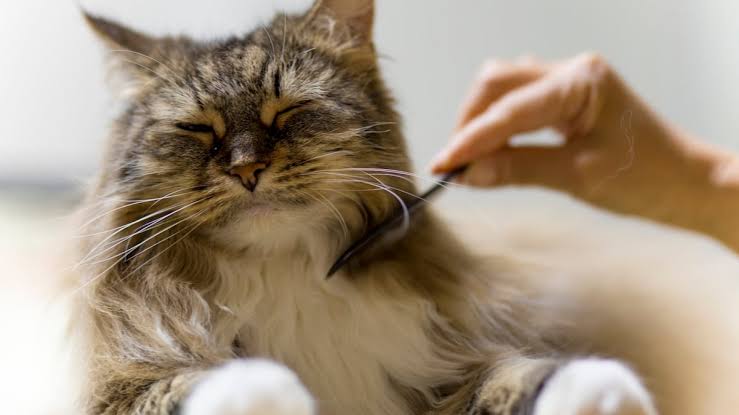
How to Prevent Matting in Cats and Dogs
This article provides comprehensive guidance on preventing matting in cats and dogs. It covers the causes of matting, the importance of regular grooming, proper brushing techniques, bathing tips, and when professional help is needed, ensuring your pet's coat stays healthy and comfortable.
🐶 Pet Star
13 min read · 1, Feb 2025

Understanding the Causes of Matting
Now, what exactly causes matting? Well, my dear, it's mostly due to a lack of regular grooming. When fur isn't brushed regularly, loose hair accumulates and tangles, eventually forming mats. Think of it like a bird's nest, but on your pet! Certain breeds, especially those with long or thick fur, are more prone to matting. But even short-haired pets can develop mats if they're not groomed properly. Other factors, like moisture (from baths or swimming), skin conditions, and even obesity (making it difficult for a pet to groom themselves) can contribute to matting.
The Importance of Regular Grooming
Regular grooming is the most important thing you can do to prevent matting. It's like brushing your own hair every day! It removes loose hair, prevents tangles, and keeps your pet's coat healthy and shiny. How often you need to groom depends on your pet's breed, coat type, and lifestyle. Long-haired breeds might need daily brushing, while short-haired breeds might only need it a few times a week.
Diet and Hydration: Supporting Coat Health from Within
A healthy diet and proper hydration are also important for preventing matting.
A balanced diet provides the nutrients your pet needs for healthy fur growth. And keeping them hydrated helps prevent their fur from becoming dry and brittle, which can make it more prone to matting.
When to Seek Professional Help
Sometimes, despite our best efforts, mats can still develop. If you find large mats, or mats that are very close to your pet's skin, it's best to take them to a professional groomer or a veterinarian. They have the experience and the tools to safely remove the mats without injuring your pet. They can also give you advice on how to prevent matting in the future.
Regular Checkups: Identifying Underlying Issues
Regular checkups with your veterinarian are also important. They can identify any underlying medical conditions that might be contributing to matting, such as skin allergies or hormonal imbalances. Addressing these issues can help prevent matting and keep your pet healthy and comfortable.
The Comfort and Health of a Mat-Free Coat
So, my dear grandson, remember that preventing matting is an essential part of pet care. It's not just about keeping your pet looking good; it's about their comfort and health. A mat-free coat is a happy coat!
Q&A Section:
Q1: My cat is long-haired and prone to matting. What type of brush should I use?
Ans: For long-haired cats, a slicker brush is a must-have. It helps to remove loose undercoat and prevent tangles. A de-shedding tool can also be very helpful, especially during shedding season. And a comb with long teeth is essential for working through any mats that do develop.
Q2: My dog hates being brushed. What can I do?
Ans: Start by getting your dog used to being handled. Gently touch their paws, ears, and tail. Offer them treats and praise while you're doing this. Start with short brushing sessions and gradually increase the time as your dog gets more comfortable. You can also try using a grooming glove, which feels more like petting to some dogs.
Q3: How often should I bathe my dog?
Ans: Bathing your dog too often can actually dry out their skin and make them more prone to matting. Generally, bathing every few months is sufficient, unless your dog is particularly dirty or has a skin condition.
Q4: I found a small mat on my cat. How can I remove it safely?
Ans: If the mat is small and not too close to the skin, you can try carefully cutting it out with blunt-nosed scissors. Be very careful not to cut your cat's skin. You can also try using a mat splitter, which is a tool specifically designed for removing mats. If the mat is large or close to the skin, it's best to take your cat to a groomer or a veterinarian.
Q5: My rabbit's fur is matting. What should I do?
Ans: Matted fur can be very painful for rabbits. If the mats are small, you can try carefully cutting them out with blunt-nosed scissors. Be extremely careful not to cut your rabbit's delicate skin. If the mats are large or close to the skin, it's best to take your rabbit to a veterinarian or a groomer who has experience with rabbits. They can safely remove the mats and provide guidance on preventing future matting.
Similar Articles
Find more relatable content in similar Articles
Explore Other Categories
© 2024 Copyrights by rPets. All Rights Reserved.